10 Typical Drinks from Portugal
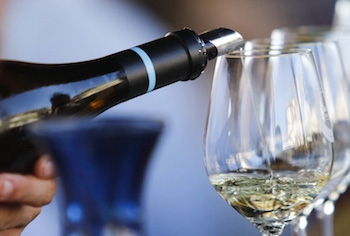
The hot weather has arrived in Lisbon and it seems to be here to stay. With it, we can’t help but think about spending time with friends over food and drinks. If going out for dinner is something we tend to do all year long here in Portugal, as soon as Spring rolls in and the weather allows, we like to add a little step into that end of the day or weekend routine. Before hitting a restaurant, we love catching up over drinks, while enjoying the sunset al fresco. Lisbon is a city privileged with incredibly stunning views, and we thankfully have plenty of rooftop bars where we can enjoy inspiring views of the warm terracotta roofs that contrast with the blue of the Tejo river in the distance.
Right now, enjoying time out with friends may be a little limited, true. But while we look forward to days of being more carefree while socializing, that doesn’t mean we can’t enjoy the drinks we always love and, even if virtually, cheer with you here today.
Besides the obvious white and red wines, as well as a variety of local beers, here are other typical alcoholic drinks from Portugal, we suggest you try when you come visit us:
1. VINHO VERDE
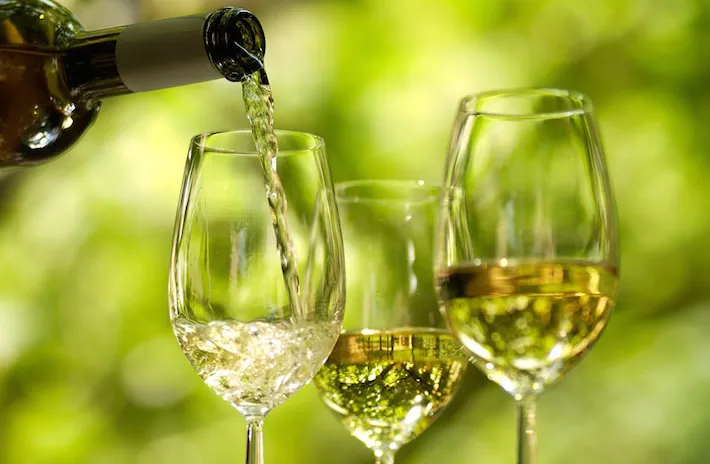
While including wine on this list would be way too obvious, vinho verde is a different story. Portuguese vinho verde is worth a mention, not only because it is downright good, but most of all because it is often misunderstood.
As its name translates as “green wine” people often think that it is indeed green in color, or that it is made with unripe grapes. That is not true. Vinho verde refers to wine that originates in the Vinho Verde wine region around Minho, in the north of Portugal.
We are not talking about a type of grape but a way of producing wine, specifically in this geographical location. Vinho verde can be red, white or even rosé. Even though you will most commonly come across white vinho verde. It is not green, but it is indeed usually drunk young, as it is ready to drink just a few months after bottling. Portuguese people tend to consume chilled white vinho verde mostly in the summer, once it is very crisp, slightly fizzy and quite refreshing.
Read on: 7 Wine Bars to go when in Lisbon
2. GINJA
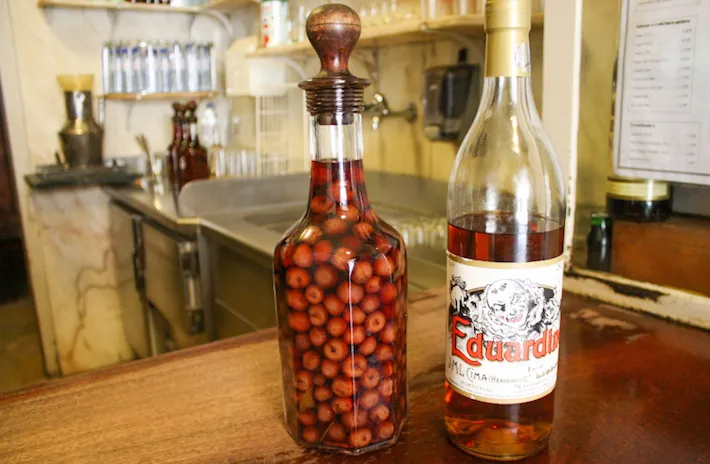
If you have been to Lisbon, you have certainly come across ginja, also known as ginjinha. This sour cherry liqueur is a tourist favorite but has sweetened locals’ palates for a long time too.
There are establishments in Lisbon entirely dedicated to selling this sweet beverage made with Morello cherries, a variety of spices, and plenty of sugar. Some of them have been open for over a century and are true institutions of the food and drinks scene of our city.
Until not that many years ago, drinking a ginja would only bring up one question: cherry or no cherry? You can choose to have a few little morello cherries included in your shot glass, so you can eat them after you sip the beverage – be careful as they are not pitted!
Nowadays, ginja is also served in edible chocolate cups. While you may choose among white chocolate, milk chocolate and dark chocolate, dark chocolate does indeed pair beautifully with the super sweet, almost syrupy drink.
3. Licor Beirão
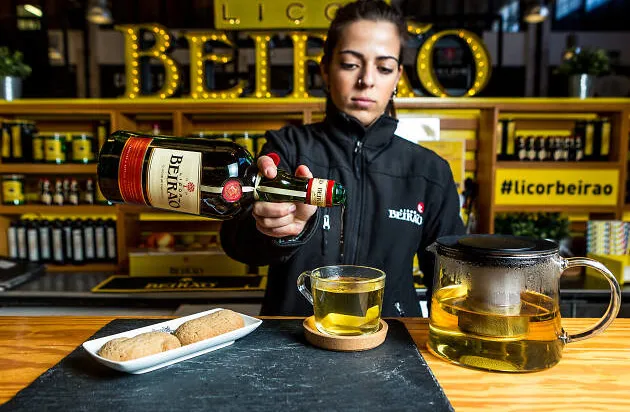
Licor Beirão, also known in short simply as Beirão, advertises itself as “Portugal’s liquer”. It may not be the liquer, but it certainly is one of the most popular ones.
The name speaks of the origins of this distilled drink, in the Beiras region of Portugal. If you are a fan of sweet drinks, the secret mix of herbs, cinnamon, mint, lavender, rosemary, and cardamom you’ll find in Beirão is sure to tickle your fancy. Licor Beirão can be downed as it is but, because of its intensely sweet nature, it goes well with plenty of ice.
It is also a favorite for cocktail making with Portuguese signature, such as in Caipirão, an adaptation of Brazilian Caipirinha that, instead of using cachaça, would take Beirão as the main booze. Beirão can also be used to spike up other drinks such as sangria, adding alcohol, sweetness, and a very aromatic flavor.
4. Porto Tonic
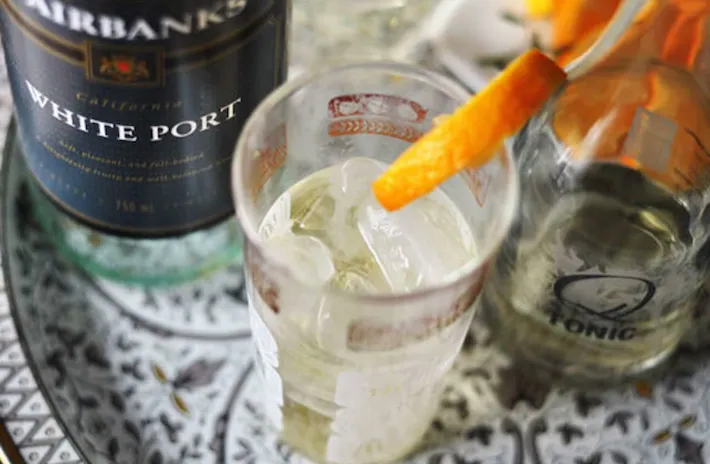
Many know Port wine, without a doubt, Portugal’s most popular fortified wine. But, besides drinking the several varieties of existing Port wine as they are, did you know that we also tend to play around with Port for cocktail making? Admittedly, this is most commonly enjoyed in the northern city of Porto, but we all love a reinvigorating Porto Tonic nationwide.
If you like Gin & Tonic, this would basically be the same, but replacing the gin for Port wine. You can do this with either red or white Port, but white is indeed more common.
If you’d like to indulge in a cocktail hour with a distinct Portuguese flavor, ask for a Port Tonic or, for now, you can easily make it at home too: place plenty of ice in a tall glass; add 1 part Port and 2 parts tonic water; garnish with lemon peel and mint to taste, stir and enjoy!
5. Madeira Wine
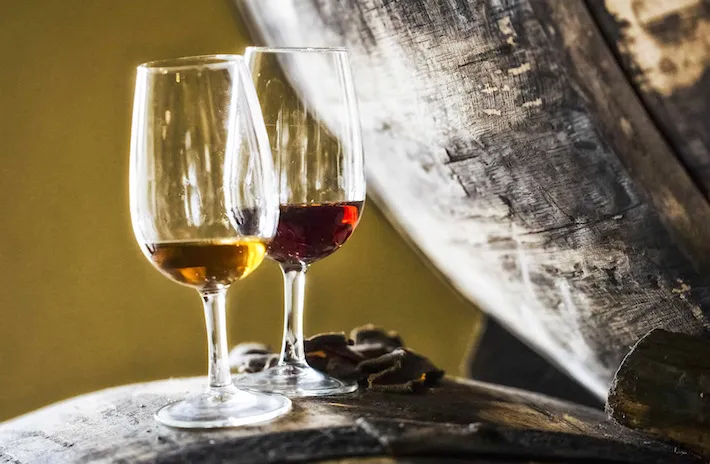
As mentioned earlier, Port wine is the most famous fortified wine in our country, but it certainly isn’t the only one. Madeira wine, for instance, is also worth a mention. Produced in the Atlantic islands of Madeira, off the coast of Africa, Madeira, just like Port, comes in many different types and styles.
The most widely appreciated type of Madeira wine is indeed the sweeter Madeira, consumed as a dessert wine or even aperitif. Madeira has gained a reputation internationally, namely in the UK and USA, because some recipes call for Madeira wine as seasoning.
Madeira wines used for cooking purposes are often of lower quality and made specifically for the purpose of marinating food. For an enjoyable drinking experience, look for higher grade Madeira wines.
6. Poncha
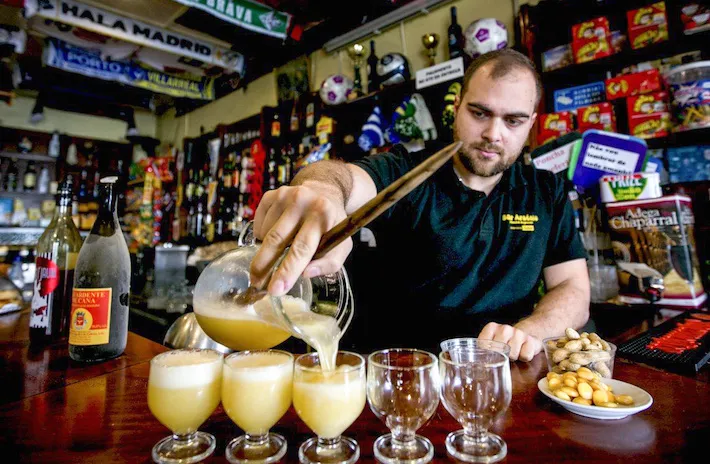
Besides Madeira wine, the islands of Madeira are famous for poncha. Poncha is one of those deceiving sweet drinks that seems to go down so smoothly, you almost forget you are drinking quite an alcoholic drink, until you start feeling the effects shortly after.
Poncha is made with Madeira rum, distilled from sugar cane juice. It is sweetened with sugar or honey, and flavored with fruit juice, most commonly lemon or orange. Poncha is believed to have been adapted from Indian panch, which went on to become punch in other parts of the world. It is very strong and best enjoyed with plenty of ice.
7. Aguardente de Medronho
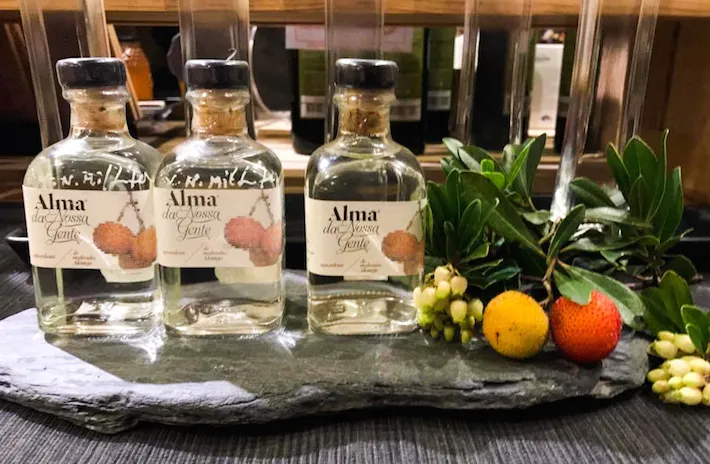
If you are into strong spirits, give medronho a try. This is a traditional Portuguese brandy made with the fruit of the medronho tree, also known in English as wild strawberry tree, but not to be mistaken with the actual strawberries we all know.
Medronho is a tart fruit that grows wild and is not farmed. Thus Aguardente de Medronho, aka medronho brandy, is a drink you will most commonly find in the countryside, in rather traditional or even rustic settings, and very much associated with the southern region of Algarve.
Down a shot of medronho after a heavy meal and, according to popular wisdom, this will aid with your digestion process. With around 48% alcohol, it will certainly open up your ways, leaving a burning sensation down your throat.
8. Licor de Amêndoa Amarga
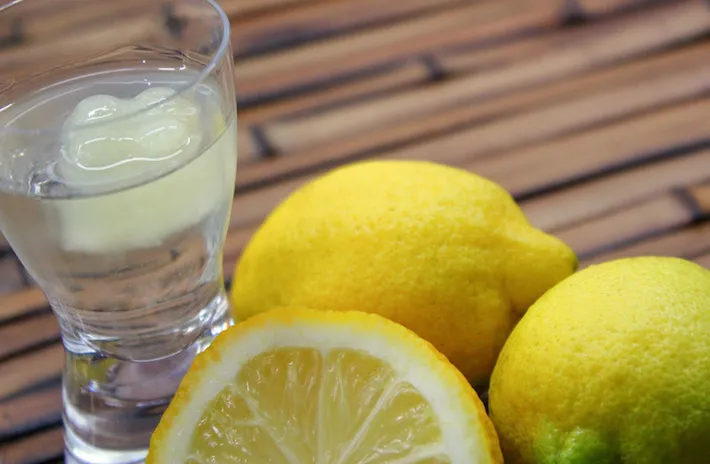
This bitter almond liqueur is often referred to as Amarguinha, even though this name refers to an actual brand. Licor de Amêndoa Amarga is a sweet alcoholic almond liqueur, quite similar to Italian Amaretto.
It is most commonly produced and enjoyed in the southern region of the Algarve, where almonds are extensively produced.
While this drink can be used as an ingredient in cocktail making, it is most commonly enjoyed on its own as an appetizer or dessert, normally served with plenty of ice. A squeeze of lemon is often also stirred in to add some acidity to an otherwise quite sweet liqueur.
9. Moscatel
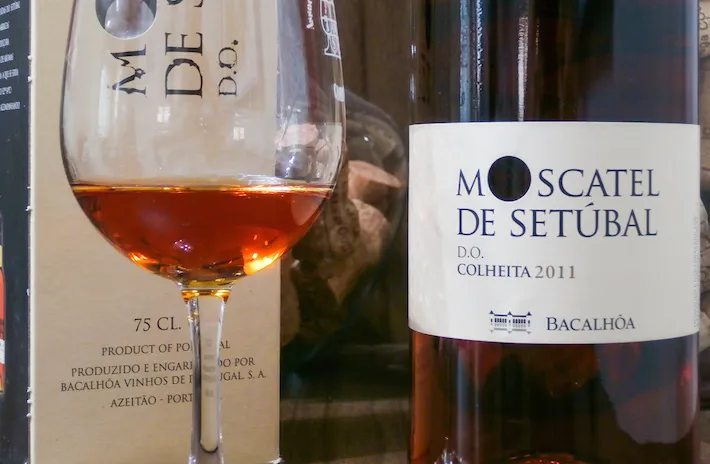
Moscatel, known in English as muscatel, refers to wine made with muscat grapes and is not exclusive from Portugal. That being said, it is still one of the most appreciated types of sweet wines consumed around here. In Portugal, you will come across Moscatel de Setúbal, produced in the region nearby Lisbon, and Moscatel from Douro, from the same region popularized by Port wine.
Overall, Moscatel is known for being a particularly aromatic grape variety, used mostly for fortified wines that tend to reach quite high levels of sugar. As such, this is not the type of wine you’d drink with your meal but, instead, enjoyed as an appetizer or dessert. If you have already tasted Port and Madeira, do not miss out on Portuguese Moscatel!
10. Aguardente
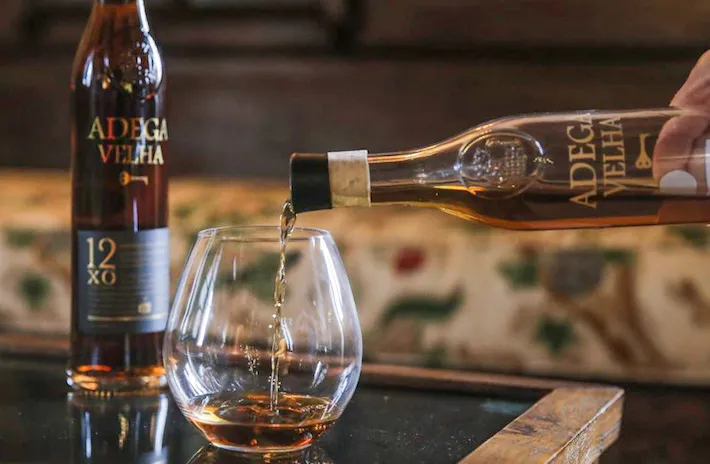
Firewater. Burning water. There’s no official translation for aguardente because aguardente is not an official drink. What does that even mean? Well, aguardente may refer to any alcoholic drink containing around 50% alcohol. Aguardente vínica is distilled from wine, but you can make aguardente using other fruits, like the medronho mentioned above or sugar cane used for poncha.
Not everyone can take aguardente in its pure form. But there’s a very typical way of enjoying aguardente all around Portugal which can be a fun experience for travelers visiting us: café com cheirinho. “Coffee with a little scent” is what we ask for when we want our espresso to be spiked up with some alcohol. This can be requested at any given café. If the establishment is quite traditional, don’t be surprised if you don’t see a label on the bottle of aguardente, as it may be from the owner’s very own production, or from a friend of a friend. If you’d like to have your coffee “with a little scent” or “with music”, as they say in the Azores islands, the waiter will top up your little espresso cup with this ultra alcoholic drink. You get your caffeine kick, you add in the aguardente shot to supposedly aid digesting your meal, and you’re good to go!
What other Portuguese drinks have you tried? Share with us on Facebook or Instagram. Please tag us @tasteoflisboa #tasteoflisboa
Feed your curiosity on Portuguese food culture:
Quick Introduction To Portuguese Wine (and Portugal’s Wine Regions)
Alcohol-free Portuguese drinks you will love to try
10 Portuguese cheese you must try
Foods you didn’t know were Portuguese
Real people, real food. Come with us to where the locals go.
Signup for Taste of Lisboa’s next food & cultural experiences
Follow us for more at Instagram, Twitter e Youtube
